Are we living in a simulation? Elon Musk mentions “There’s a billion to one chance we’re living in base reality”, but the Consumer Virtual Reality (CVR) event hosted by Archiact really puts this to the test. Attendees experienced virtual worlds, listened to industry best-practices, and met many organizations that are key players in the virtual reality (VR) scene globally, and in Vancouver. Here’s an overview of a few of my favourite speakers and experiences from CVR!
1. NASA: Solving the Problems of Working in Outer Space with VR Technologies
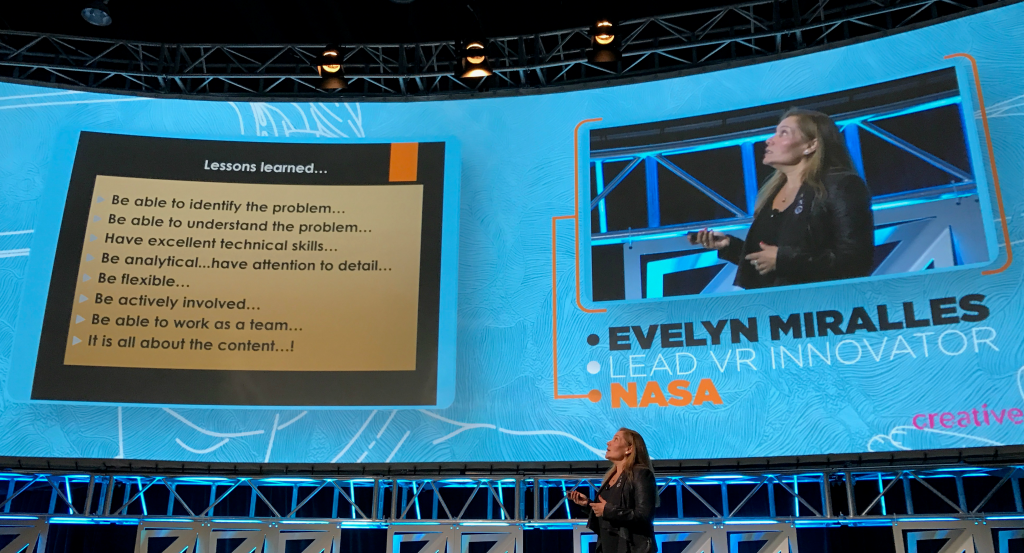
Evelyn Miralles, the Lead VR Innovator/ Business Technology Engineer, does a deep dive on astronaut training practices at NASA.
Before VR became consumer-accessible technology, NASA created their own headsets in-house because they saw the potential it could bring to education, training, and simulating space missions. Combining VR technologies with robotics for replicating zero-gravity situations to recreating the entire International Space Station (made with over 6 million polygons!) for astronauts in training to get a handle of the SAFER jetpack propulsion system and mass handling, the VR innovations is as boundless as the minds of the content creators.
To wrap up the aero-dynamic presentation, Evelyn Miralles spoke about the future of VR for NASA:
- Using VR as a medium to show students what it’s like to be with an astronaut at the International Space Station in real-time.
- Having the same content synchronized across all platforms, as well as an improved field of view.
- Augmented Reality (AR) helmets for astronauts to use during missions.
2. Google: Scaling VR and AR Through Hardware Distribution and Great Content
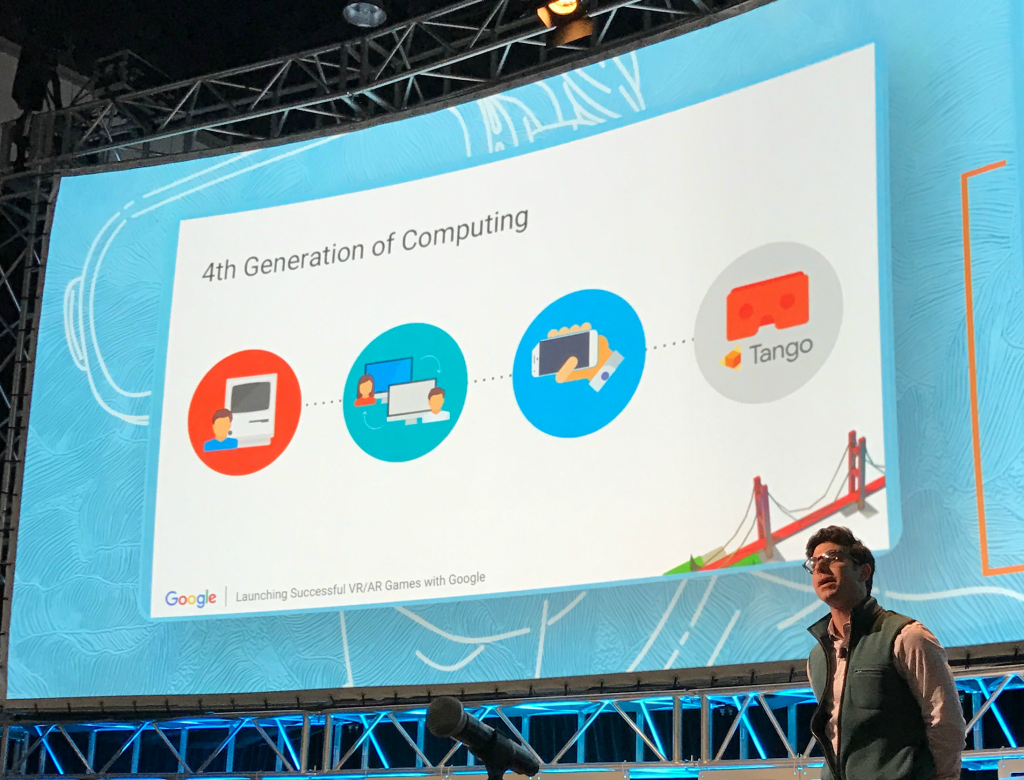
Michael Almeraris, Google’s Global VR/AR Gaming Store Lead, describes measures of quality and scale for VR applications.
Could this be the 4th generation of computers? We’ve all seen the original mainframe computers, that began the need for easily accessible knowledge, transform into personal computers for at-home use. The next stage was our mobile phones adopting the same computational abilities as desktop computers. Almeraris teased the idea that VR could be the 4th generation of computing, but in order to achieve this, scalability must be taken into consideration.
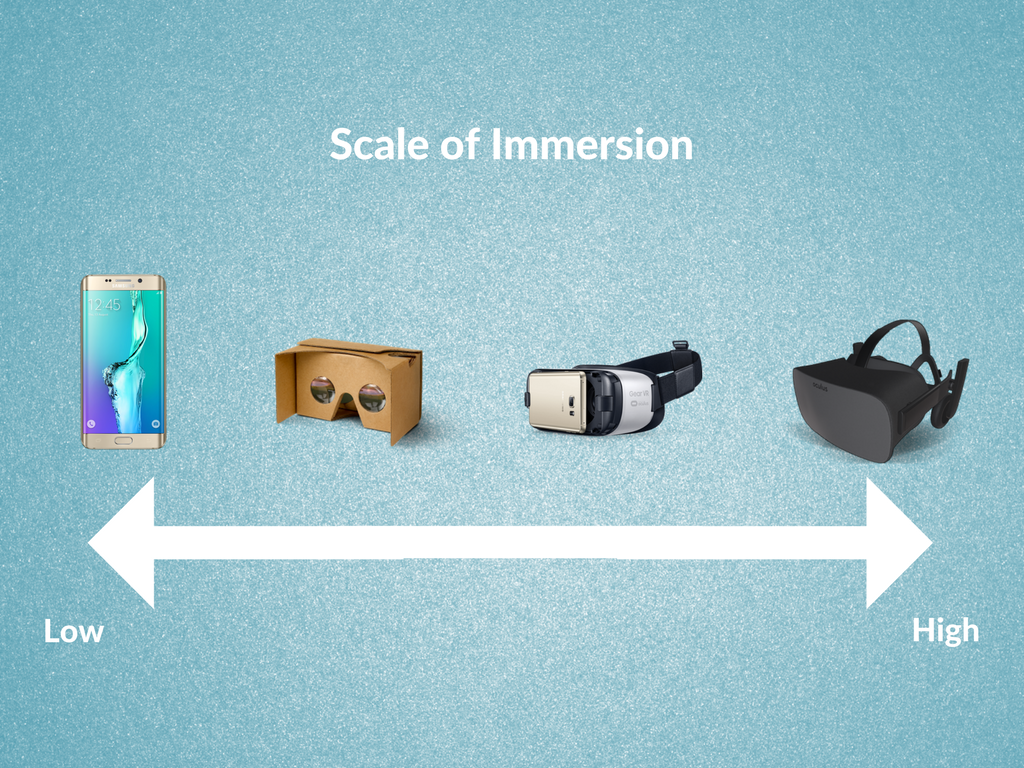
To introduce people to the concept of VR, 360 video experiences began rolling out on platforms like Facebook, Youtube, and other commonly visited sites. Once the general population has an understanding of 360 experiences, Google Cardboard is up next. It is a cheap and easily accessible platform to experience VR mobile applications which allows for a stereoscopic view to provide users with a sense of depth. Next, the Samsung GearVR introduces controllers that enable players to use their hands within the VR application. Finally, the most fully immersive experiences that combine movement, vision, and sound, are provided by headsets like HTC Vive and the Oculus where graphic quality is the focus.
With these new platforms, new analytics are important to track! For app developers, paying attention to a user’s average session length (and where in the game users tend to leave) is important for identifying a user’s comfort level with the content you’ve produced. In terms of tracking motions, we’ll talk more about that later when we get to HTC Vive’s speech. The main takeaway from Google’s presentation is that the mobile phone will remain the top form factor for experiencing AR/VR today, and should be a content developer’s main area of focus if we want adoption to happen faster.
3. HTC: Vive Tracker Best Practices – How to Bring Real World Objects into VR
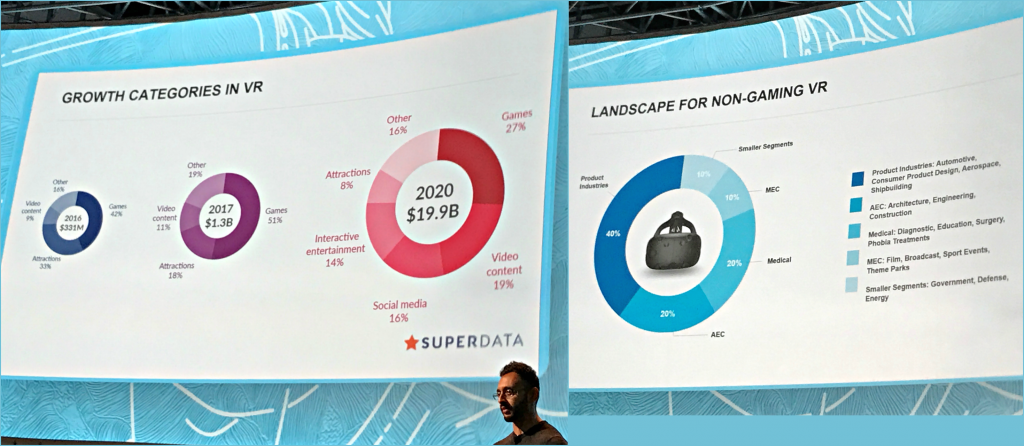
Vinay Narayan, the Executive Director of VR for HTC VIVE, speaks about investment and market growth within VR.
The excitement about this upcoming industry can be felt by content creators and investors alike. Vinay Narayan presents forecasted areas of growth within the VR market segments that venture capitalists should keep their eyes on. Although VR has always been thought of in relation to gaming, Narayan has also laid out the non-gaming landscape of VR for more practical everyday uses. According to his diagram, VR currently has the greatest impact on the automotive, product design, and aerospace industries. For investors, this information is invaluable as it reveals which industries have the highest need for VR and can help determine which organizations to fund.
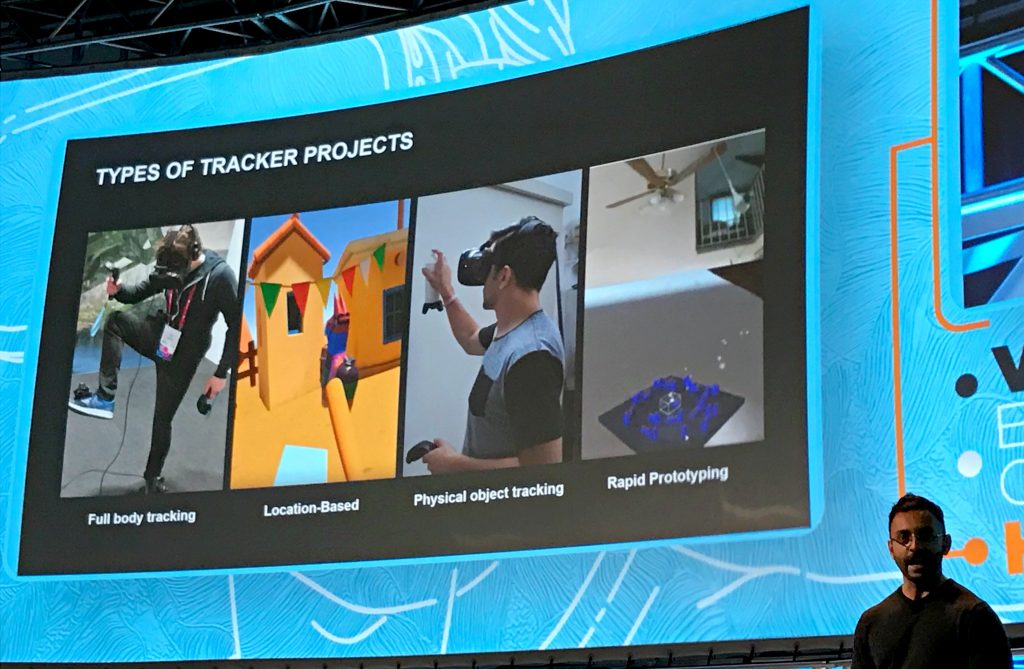
A key aspect of Narayan’s speech was the use of Vive trackers that can be placed onto any real-world item (3D printed ones too) for game developers to incorporate physical objects into their VR space. With the added trackers, it not only provides new in-game objects but a multitude of tracking analytics as well! For example, developers attached trackers onto foot braces that enabled a user’s locomotion to feel much more natural in-game. These new trackers provide a cost-effective solution that allows us to fully-immerse ourselves and breaks the boundaries of tracking limited by standard hand controllers!
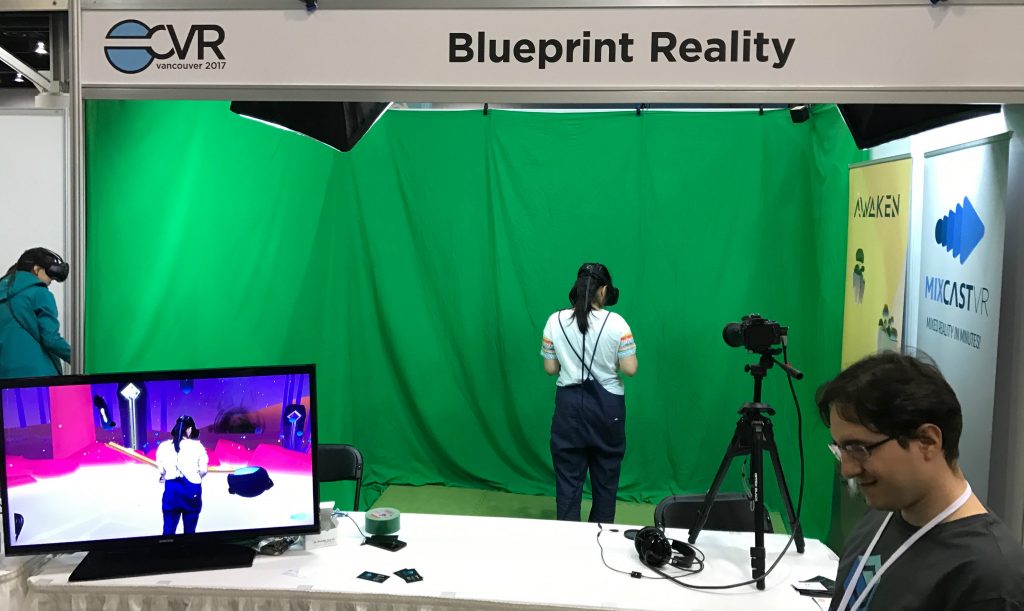
On top of these amazing speakers, the expo was quite a treat! One organization in particular, LlamaZOO Interactive, provided VR experiences in the education field. Their software not only allowed users to virtually dissect an animal but we were also able to learn and read about various parts within the animal’s body (nervous system, skeletal, circulatory, etc.). This was great because it replaced the gruesome aspects of real-life animal dissection with a fun and interactive learning experience. As well, Blueprint Reality gave a great demonstration of mixed realities that gave users, who were new to VR, a better understanding of what it meant to interact with a VR space. Overall, CVR was a great way for those that are new to the scene in Vancouver to experience many virtual words and see what VR has in store for the future!

Driven by technology, innovation, and laughter, Bailey Wong is in her fourth year at Simon Fraser University’s Beedie School of Business. Concentrating in Marketing, Management Information Systems, and Entrepreneurship, her creative mind never settles as she is always looking for ways to get involved.
Bailey is currently a Beedie Ambassador and works part-time at ImpactVR, which provides VR and 360 content solutions for businesses. If any of these concepts inspired you, feel free to reach out to her for a coffee chat at baileyw@sfu.ca!